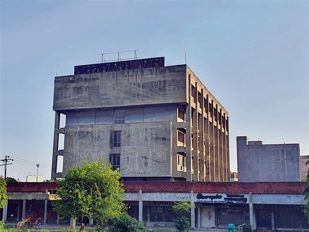
The Holme in Shimla, which was the residence of Amrita Sher-Gil’s parents.
Raaja Bhasin
Amrita Sher-Gil was to overhaul Indian art through the first half of the 20th century. Her works have been declared ‘National Treasures’ by the Government of India and a corpus of her paintings is housed in the National Gallery of Art, New Delhi.
A substantial portion of her work was done in Shimla, between November 1934 and June 1938. This phase of her life and painting is often referred to as Amrita Sher-Gil’s ‘Simla Period’.
Amrita Sher-Gil was born on January 30, 1913, in Budapest. Her father was Umrao Singh Sher-Gil, the scion of an aristocratic Sikh family from Amritsar and Marie Antoinette Gottesmann-Baktay, a Hungarian opera singer, who had come to India as the travelling companion of Princess Bamba, grand-daughter of Punjab’s Maharaja Ranjit Singh. The baby was named ‘Amrita,’ after Amritsar, the ‘tank of immortality.’
It was in April 1921 that the Sher-Gils came to Shimla and moved into their villa — ‘The Holme’ — in Summer Hill. Two ladies were employed by her parents to give Amrita and her younger sister, Indira, piano and English lessons. For two years, 1922 and 1923, an English gentleman, Major Whitmarsh, was also retained to give lessons in drawing. He was replaced by the brilliant Hal Bevan Petman, who was already known for his somewhat risqué work. Bevan Petman was impressed with Amrita’s talent and suggested she be trained at the finest schools of Europe. On the art-tutor’s suggestion and sensing Amrita’s keen interest in art, her mother took the girls to Florence, Italy and had them admitted to an art school. Amrita was 11 at the time. This did not prove to be a success and Antoinette brought them back to India. The period June 1924 to April 1929 was spent mostly in Shimla – Amrita and her sister, took part in a couple of plays staged by Shimla’s Amateur Dramatic Club. In April 1929, the 16-year-old Amrita was taken to Paris, where her artistic talents blossomed and she placed the foundations of an enduring reputation. In the 1930s, in Shimla, she set to work – even though her friendship with the celebrated journalist Malcolm Muggeridge aroused more comment than her work.
In 1938, Amrita decided to marry her first cousin (her mother’s nephew), Victor Egan, who was a doctor. She had known him well from childhood. They were married in July that year and came to India from Budapest. Initially, they stayed at ‘The Holme’. After a stay in Saraya – where Umrao Singh, Amrita’s father had his farms – and where Egan had secured a job at the dispensary attached to the sugar factory run by Amrita’s relatives, the Majithias. In 1941, both husband and wife moved to Lahore.
Amrita’s parents were at ‘The Holme’ on December 5, 1941, when at 8 in the evening a telegram arrived from Lahore saying that their daughter was very ill. After a few minutes of stunned uncertainty, Umrao Singh and Antoinette rushed up to the Summer Hill post office, which was a couple of 100 yards from the house, and set-up a trunk call to Lahore. After the tortuous telephone connection was established, the news was reconfirmed that she was serious. Around 2 that night, another telegram was delivered to the house saying that Amrita had passed away. Again the distraught parents rushed up to the post office and after considerable effort were able to get a phone call through to Lahore. They spoke to their son-in-law, who confirmed the news in that awful missive. Amrita’s parents were able to hire a car and rush to Lahore, where they reached on the evening of December 6.
A heartbroken Umrao Singh Sher-Gil wrote on the death of his 29-year-old daughter: “During those 10 days (after Amrita’s death), I often gazed on a water colour miniature of the Kangra School, which Amrita had left on the mantelpiece. It represented a young woman, walking gaily with head averted, oblivious of two deadly snakes lying right in the pathway in front of her. It seemed to me that it symbolised the last phase of her own life in coming to Lahore with buoyant hopes, not aware of the death which lurked for her there.”
(The writer is an author, historian and journalist)


























